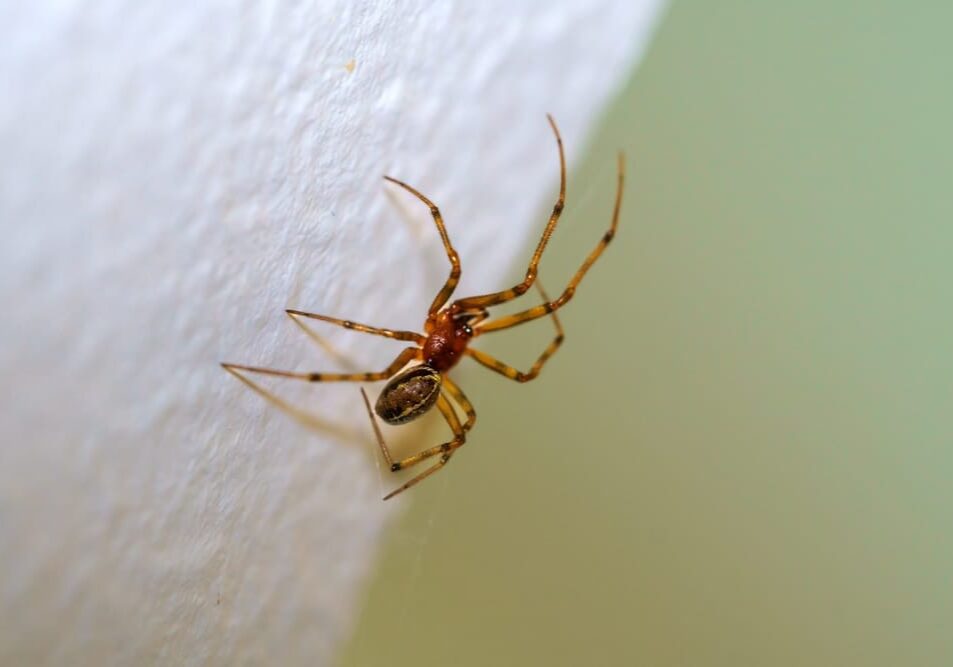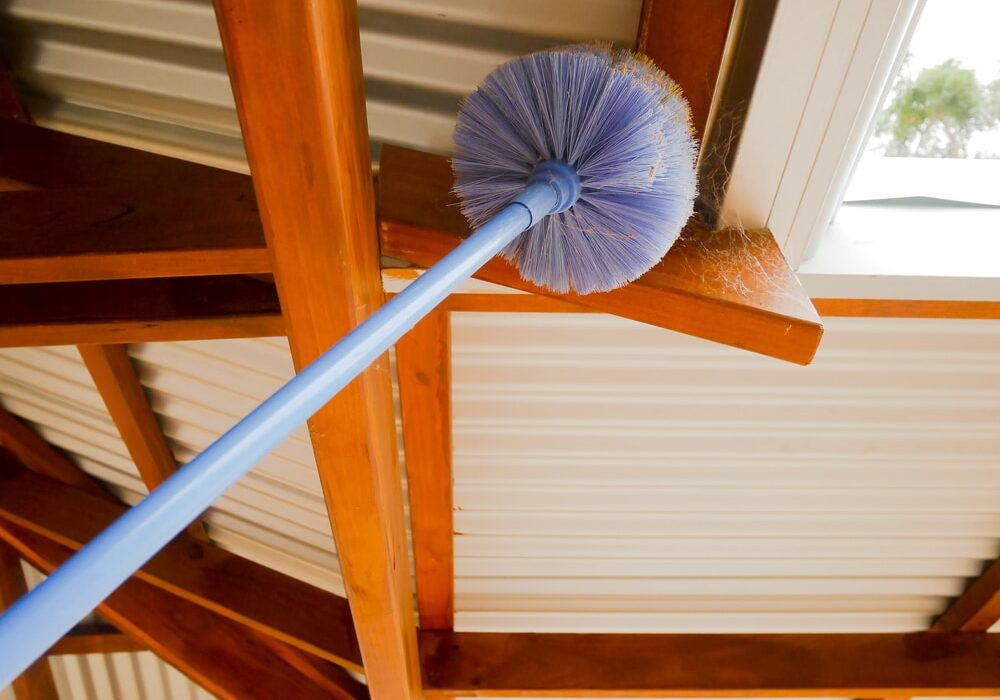When September arrives, many Oklahoma homeowners notice a sudden uptick in spider activity. It’s the time of year when you might walk through more webs on your porch, see spiders moving inside your home, or find them setting up shop in your garage or basement. While this seasonal increase can be unsettling, it’s also entirely natural.
Spiders play an important role in controlling other insects, but no one wants an infestation inside their home. Understanding why spiders become more active in the fall — and how to manage them safely — is key to keeping your home comfortable and pest-free.
At Emtec Pest Control, we’ve spent decades helping Oklahomans protect their homes from unwanted pests, including spiders. In this post, we’ll explain why spider activity spikes in September, what homeowners can do to limit encounters, and how our safe and effective treatments keep these eight-legged visitors under control.
Why Do Spiders Become More Active in September?
The sudden increase in spider sightings isn’t just in your imagination — September really does bring more activity. Here are the main reasons:
-
1. Mating Season Begins
For many common Oklahoma spiders, including house spiders and wolf spiders, early fall marks the start of mating season. Male spiders begin actively roaming in search of females, which makes them more visible than during summer months. This explains why you may suddenly see spiders skittering across your floors or hanging out in corners.
-
2. Cooler Temperatures Drive Spiders Indoors
As temperatures drop in the evenings, spiders start seeking out warmth and shelter. Homes, garages, and sheds provide the perfect environment for them to thrive, especially in undisturbed areas like basements, attics, and storage spaces.
-
3. Increased Insect Activity
September is also when many insects are highly active before the first frost. Since spiders rely on insects for food, they follow their prey indoors or closer to human living spaces. More bugs mean more spiders.
-
4. Seasonal Web-Building
Orb-weaving spiders are especially noticeable in September because they build large, intricate webs to capture the abundance of insects still buzzing around. Those big webs you see across porches and windows are a classic sign of fall spider season.

Common Spiders in Oklahoma Homes
Oklahoma is home to a wide variety of spiders, most of which are harmless. However, a few species require special caution.
-
Common House Spiders
Small, brownish spiders often found in corners and basements. Harmless but unsettling.
-
Wolf Spiders
Large, fast-moving hunters that roam instead of spinning webs. Non-venomous but intimidating.
-
Orb-Weavers
Known for their large circular webs outdoors. They’re harmless and actually helpful in insect control.
-
Cellar Spiders (Daddy Longlegs)
Thin-legged spiders often found in basements. Harmless and shy.
-
Black Widow Spiders
Venomous and dangerous; easily identified by their shiny black bodies and red hourglass marking.
-
Brown Recluse Spiders
Venomous and potentially harmful; light brown with a violin-shaped marking on their back.
While most spiders pose little to no threat, venomous species like the black widow and brown recluse can be dangerous to humans and pets. This makes professional spider control especially important in Oklahoma.
Why Spiders Are Attracted to Homes in the Fall
Spiders don’t invade homes because they want to be near people. In fact, they prefer to avoid humans altogether. What they’re really after are the conditions your home provides:
Food Sources:
Homes with insect activity attract spiders. If you have flies, ants, or moths inside, spiders will follow.
Shelter:
Basements, attics, and storage areas provide dark, undisturbed spaces perfect for nesting.
Moisture:
Spiders are drawn to damp areas like bathrooms, kitchens, and laundry rooms.
Warmth:
As outdoor temperatures fall, heated homes become appealing environments.
By addressing these attractants, you can make your home less appealing to spiders.
Simple Steps Homeowners Can Take to Reduce Spider Activity
Before calling in a professional, there are practical steps homeowners can take to limit spider presence indoors.
1. Seal Cracks and Gaps
Inspect windows, doors, siding, and foundation cracks for possible entry points. Sealing gaps with caulk or weather stripping prevents spiders — and the insects they prey on — from getting inside.
2. Reduce Clutter
Spiders love cluttered spaces where they can hide undisturbed. Organize storage areas, keep clothing off floors, and use sealed containers for items in garages or basements.
3. Clean Regularly
Vacuuming and dusting removes spider webs, egg sacs, and the insects they feed on. Pay attention to corners, under furniture, and less-used rooms.
4. Limit Outdoor Lighting
Outdoor lights attract flying insects, which in turn attract spiders. Using yellow or sodium vapor lights reduces insect attraction.
5. Maintain Landscaping
Trim bushes and shrubs away from your home’s exterior, and avoid stacking firewood against the house. These areas often harbor spiders that eventually make their way
6. Control Other Insects
Since spiders feed on insects, reducing overall pest activity is key. Simple preventative steps like sealing food containers and cleaning up crumbs go a long way.
How Emtec Safely Controls Spiders
DIY methods like sprays and traps can help with minor spider issues, but for lasting results — especially in Oklahoma where venomous spiders are present — professional pest control is the safest choice. Here’s how Emtec approaches spider management:
-
1. Thorough Inspection
Our experts carefully inspect your home to identify spider hotspots, locate potential entry points, and determine whether venomous species are present.
-
2. Targeted Treatment Plans
We use safe, proven treatments customized for each home. This includes treating cracks, crevices, and key areas where spiders nest, while minimizing exposure for people and pets.
-
3. Web and Egg Sac Removal
Part of our process includes physically removing webs and egg sacs, reducing the chances of reinfestation.
-
4. Long-Term Prevention
Emtec focuses on prevention as much as elimination. By addressing the underlying factors that attract spiders, we ensure long-term results.
-
5. Family- and Pet-Safe Solutions
We understand that safety is a top priority for homeowners. That’s why our methods are carefully selected to be effective against spiders while remaining safe for your family, pets, and the environment.

Debunking Common Spider Myths
Spiders are often misunderstood, leading to unnecessary fear. Let’s clear up a few common myths:
-
Myth: All spiders are dangerous.
Only a small percentage of spiders in Oklahoma are venomous. Most are harmless and actually helpful in reducing insect populations.
-
Myth: Spiders aggressively attack humans.
In reality, spiders prefer to avoid people. Bites usually occur only when a spider feels trapped or threatened.
-
Myth: Killing spiders is the only way to control them.
Reducing food sources, sealing entry points, and working with pest professionals are more effective and sustainable solutions.
Keeping Your Home Comfortable This Fall
Spiders are a natural part of Oklahoma’s ecosystem, but that doesn’t mean they belong in your living spaces. By understanding why spider activity spikes in September and taking proactive steps, homeowners can greatly reduce unwanted encounters.
At Emtec Pest Control, we specialize in safe, effective spider management tailored to your home. Whether you’re dealing with harmless web-builders or more concerning species like brown recluses or black widows, our team has the expertise to handle the problem and keep your family safe.
At Emtec Pest Control, we are committed to safe and responsible pest control. We understand that your family’s safety is your number one priority, so we make it our priority, too.
If you have any other questions about any of these pests or pest control for your home or business, contact your Oklahoma pest control experts at Emtec Pest Control by calling us or by filling out our online contact form.
